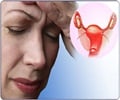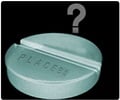
The treatment involves placing a pacemaker under the patient's clavicle with electrodes attached to the brain.
For several years, the method has also been investigated in the treatment of the most severe cases of depression, with striking and completely unexpected success.
In patients who had undergone many years of unsuccessful treatment, the symptoms sometimes delivered significant, long-term improvements.
"Depression does not return in patients who responded to the stimulation," said Prof Thomas Schlapfer from the Bonn Hospital for Psychiatry and Psychotherapy.
"The method appears to have lasting effects - and this is in the case of the most treatment-resistant patient group described in the literature. This has never happened before," he added.
Advertisement
Surprisingly, the effects are nearly identical regardless of where the stimulation was delivered.
Advertisement
he so-called medial forebrain bundle forms a kind of feedback loop, which allows us to anticipate positive experiences.
"This circuit motivates us to take action," said brain surgeon Prof Volker Coenen.
"In patients with depression, it is apparently disrupted. This results in, among other things, an extreme lack of drive - a characteristic symptom of the disease," he added.
The nucleus accumbens, internal capsule, und cg25 all appear to be connected to the medial forebrain bundle.
Coenen, who was the first to anatomically describe the forebrain bundle in humans, now proposes implanting the electrode for deep brain stimulation directly into this structure.
"We would use the electrode to send the current pulses to the base of the network and not to the periphery, as before," said Schlapfer.
"We could thus potentially work with lower currents and yet achieve greater success," he added.
The brain pacemaker is already being used in 80,000 patients with Parkinson's disease worldwide.
Coenen said from a medical viewpoint, deep brain stimulation should be able to help patients with severe depression.
The study has been published in Neuroscience and Biobehavioral Reviews.
Source-ANI














